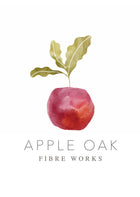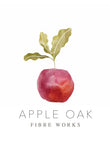
Eager to plunge into the wonderful world of natural dyeing? Explore our natural dyes below. Including some organic options!
9 products



















WELD DYE (Reseda Luteola)
Dye Colour: Yellow and Green (when overdyeing) | Country of Collection: Typically Europe
Weld (Reseda Luteola) is a renowned plant-based colourant with a rich history, often used to create high-quality dyes in temperate regions. Paired with other traditional dye plants like Madder, Woad, and Dyer's Chamomile, it yields beautiful shades of yellow, which can then be overdyed with Woad to create the iconic Saxon and Lincoln greens. Legend has it that Lincoln Green was the signature hue of Robin Hood and his outlaws, achieved by overdyeing Weld yellow with Woad blue.
Colour Fastness: Excellent
Colour Outcomes by WOF Ratio:
Basic Recipe for Dyeing:
Embrace the rich tradition of Weld dye and bring centuries-old colours to your fibre projects, from vibrant yellows to lush greens when combined with Woad.
Join The Natural Dyers & Growers Academy to share your experiences, join courses and get support from fellow growers and dyers.
Organic Ground, Cut, or Whole Hibiscus Flowers
Vibrant Pink & Purple Hues for Dyeing | Cultivated in Egypt
Hibiscus flowers are an excellent choice for natural dyeing, offering stunning shades from light purples to deep pinks and even greens, depending on the mordant used. Ground Hibiscus produces a lighter purple hue on wool, while cut or whole flowers yield more vibrant tones. This pH-sensitive dye is perfect for hobby dyers and children’s activities, as it offers interesting colour shifts - from green to purple to pink - and an experimental approach to dyeing.
Dyeing Tips:
Colour Fastness: Poor (colour may shift with pH changes)
Basic Hibiscus Dye Recipe:
A delightful and experimental natural dye, perfect for adding beautiful, ever-changing shades to your projects!
Join The Natural Dyers & Growers Academy to share your experiences and get support from fellow growers.
RHUBARB ROOT GROUND ONLY
Dye Colour: Yellow Brown, Green (with Iron), Pink (with Soda Ash) – pH and Mordant Dependent | Country of Collection: China
Rhubarb root is a captivating natural dye, producing a spectrum of colours that vary depending on the pH of the dye bath and the mordant used. Known as a Quinone dye, it is rich in tannins, which yield earthy yellow-brown and green hues with iron. A higher pH will shift the colour to delicate pinks or reds, though these tones are less colourfast. Notably, the yellow and green shades are more stable, maintaining their colour for longer.
Colour Fastness:
pH Sensitivity: High pH will shift the colour to red.
Colour Outcomes by WOF Ratio & pH/Mordant:
Basic Recipe for Wool:
Instructions:
Explore the versatility of Rhubarb Root as a natural dye and unlock a range of rich, pH-dependent colours in your yarn and fabric projects!
ORGANIC SAGE OFFICINALIS CUT
Dye Colour: Greenish Yellow and Green | Country of Origin: Bosnia and Herzegovina
Sage (Salvia officinalis) is a perennial, evergreen subshrub from the Mediterranean region, now widely cultivated for its culinary, medicinal, and dyeing properties. These cut, organic leaves produce soft greenish-yellow tones in natural dyeing, which can be shifted to richer greens with the addition of iron. Perfect for those seeking a versatile herb that is both fine for consumption and ideal for natural dye projects.
Colour Fastness: Good to Excellent
Ingredients:
Instructions:
Also available as a downloadable Sage recipe PDF and a convenient dye kit. Whether you use sage for a soothing herbal infusion, a fragrant addition to meals, or a natural colourant for your favourite yarn, this ancient herb connects your creative and culinary pursuits to centuries of tradition. Enjoy the earthy beauty that sage brings to your natural dye projects.
ORGANIC NETTLES ~ Used as herb and dye. Dye Colour yellow and green.
Country of Origin: Hungary
Urtica Fol. Organic, often known as common nettle, stinging nettle or nettle leaf, or just a nettle or stinger, is a herbaceous perennial flowering plant in the family Urticaceae. Originally native to Europe it has now spread worldwide.
Nettles have been used since ancient times and can be eaten, are used in herbal medicine and dyeing.
Nettles can be used fresh and dry - similar to Lovage, the best results are achieved with fresh plants, but dried plant material works well as well.
Colourfastness: medium
___________________________________________
Basic recipe:
100-200% Nettle (100% if using fresh only)
3-5% Iron
Wool (mordanted 10% Alum)
Line the pot with a cloth. Fill the pot half with water and add the nettle.
Bring to about 85-95 degrees Celsius for 1 hour.
Tie dye in Cloth and leave in bath.
Add wool and simmer gently for 1 hour.
Add 3% -5% iron to the dye bath to turn it green.
Remove after about 10min, rinse & dry.
Organic European Solidago
Dye Colour: Yellow, Orange, and Green | Organically Grown in Poland
Our Organic Solidago, also known as Goldenrod, is carefully grown and harvested in Europe, specifically Poland. Solidago is a genus of flowering plants in the aster family, with species found across meadows, prairies, and savannas, and is native to North America. This beautiful plant produces vibrant yellow, orange, and green hues when used for natural dyeing, making it a versatile addition to your dyeing projects.
Colour Fastness: Medium - Good
Colour Outcomes by WOF Ratio:
Basic Recipe for Yellow:
Unlock the potential of this naturally vibrant dye and enjoy the rich colours it brings to your fabrics and yarns.
Join The Natural Dyers & Growers Academy to share your experiences and get support from fellow growers.
(Reseda luteola / Dyer’s Weld)
Bring a piece of Ireland’s dye heritage into your studio with our homegrown Weld! Grown in Co. Clare from our own carefully saved seed, we follow organic standards and sustainable practices throughout the growing process—though we are not organically certified (yet). Every plant is tended by hand, using eco-friendly, regenerative methods from seed to harvest.
We love closing the loop: spent dye plants from our studio are transformed through our worm composting system, returning as rich compost to nourish the next generation of Weld. It’s a full-circle, regenerative approach that brings even more life to our fields and colours to your work.
This listing is for dried Weld plants, shredded for your convenience. Stock is limited each year according to our small-scale approach.
Weld, or Dyer’s Reseda, is one of the oldest sources of brilliant, lightfast yellow for natural dyeing. From the Mediterranean to Irish fields, this plant has coloured textiles for thousands of years. Over-dye with indigo to create historic Saxon and Lincoln greens—the legendary colours of Robin Hood’s band!
We trialled our homegrown Irish Weld against both German Weld and our standard imported Weld, and the results were clear—our Irish-grown Weld produced the strongest, most vibrant colour of all. We’re delighted to share the best results from our fields with you!
Weld is the base for many of our favourite greens. The clear yellow it yields is prized for its clarity, vibrancy, and excellent colour fastness.
Grown in: Co. Clare, Ireland
From our own saved seed
Grown to organic standards (not certified)
Regeneratively grown using our own worm-composted dye matter
Hand-harvested, shredded, and dried
Sold as: Shredded dried Weld
Limited stock
___________________________________________________________
A basic recipe for dyeing wool with Reseda:
50-100% Reseda (Weld) extract at 80C for one hour. (The strong yellow on the felt was achieved with 100%)
Add 7-10% Soda Ash
Wool (mordanted with Alum @10%) - leave overnight.
Perfect for beginner and experienced dyers alike!
RED SANDALWOOD DYE (Santalum species)
Dye Colour: Soft Pink and Red Tones | Country of Collection: Kongo, Africa
Red Sandalwood is a gentle, sustainable dye sourced from responsibly harvested forests in Kongo, Africa. It creates soft, rosewood-like pink and red hues that can be influenced by different mordants, allowing for subtle colour variations. While not a strong dye, it is perfect for creating delicate tones. Red Sandalwood is an economical choice as it can be used for several dips before exhaustion, and its natural fragrance enhances the dyeing process.
Colour Fastness: Medium
Colour Outcomes by WOF Ratio:
Basic Recipe for Dyeing:
Ingredients:
Instructions:
Notes:
Join The Natural Dyers & Growers Academy to share your experiences and get support from fellow growers.
German Weld (Reseda luteola) – Dried Natural Dye Plant
Our German Weld offers clear, lightfast yellow for your natural dye projects. With a yellow dye content of 5–8%, this classic botanical dye delivers reliable, vibrant results on wool, silk, and cellulose fibres. Sourced from Germany and carefully dried, it’s a staple for every natural dyer’s studio.
Weld (Reseda luteola) is renowned for producing beautiful yellow shades and for its role in creating historic greens such as Saxon or Lincoln green (achieved by dyeing indigo first, then weld). Consistent, high-quality results every time.
Colour fastness: Excellent
Simple Recipe:
A basic recipe for dyeing wool with Reseda:
Use 50–100% Reseda (Weld) extract at 80°C for one hour. (Strongest yellow achieved with 100%)
Add 7–10% soda ash
Wool mordanted with alum at 10%—leave overnight for best results
Perfect for beginner and experienced dyers alike!
Sourced from Germany
5–8% yellow dye content
Dried, cut plant material (not powdered)
Sold by weight (kg)
Excellent lightfastness
We’re not fans of crowded inboxes either, so here’s what you can look forward to in our newsletters:
✨ Updates from the Academy – new workshops, courses, and events
🧶 News from the Dye House – behind-the-scenes, fibre stories, and inspiration
🛍 Shop highlights – fresh arrivals, special offers, and exclusive sales
And of course, you’re always in control — unsubscribe anytime with a single click at the bottom of any email.
As a little welcome gift, enjoy 5% off your first order in our webshop with the code WELCOMEPOP.
Happy making! 🌿

